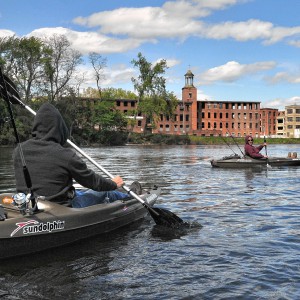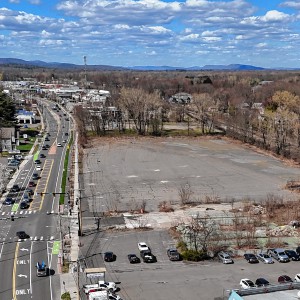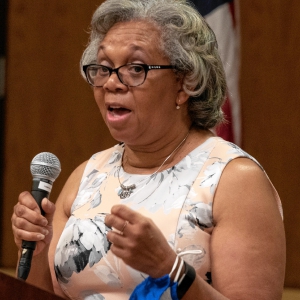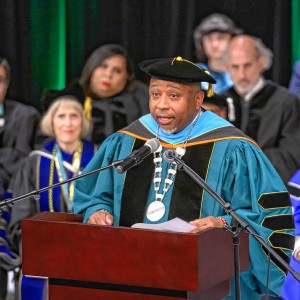Lawmakers, architects push for multistall, gender-neutral bathroom bill for new construction, renovations statewide
| Published: 04-07-2023 5:17 PM |
Architects and lawmakers are advocating for a change in the state building code to allow gender-neutral bathrooms in new construction and renovations of buildings, calling it a further affirmation of a gender-inclusive and respectful community.
Measures filed by Sen. Jo Comerford, D-Northampton, and Rep. Mindy Domb, D-Amherst, would ensure transgender and gender-nonconforming students are accommodated.
Gender-neutral signs and single bathrooms are already a norm in buildings across the commonwealth. By changing the state building code, this bill would focus on amending regulations to allow gender-neutral bathroom facilities that contain more than one toilet, urinal or shower separated by privacy walls or partitions.
As an example, Sen. Comerford referenced building a new campus center at the University of Massachusetts Amherst two years ago, when the community recognized the emerging importance of gender-neutral bathrooms.
“Not everyone wants to go to an ‘M’ or an ‘F’ bathroom,” she said. “You can’t do that unless you get a special variance to allow gender-neutral bathrooms.”
Research conducted by the Gay, Lesbian and Straight Education Network, an organization founded by educators to promote safe learning environments for LGBTQ youth, found that two-thirds of transgender students avoid school bathrooms because of feeling unsafe or uncomfortable.
Over half of transgender students reported they were required to use bathrooms of their legal sex rather than what they feel most comfortable using. Under Title IX, Education Amendments Act of 1972, the U.S. Department of Justice has deemed this requirement illegal.
When asked if the bill received any pushback from the community, Comerford said there was almost none. She added that this bill boils down to human and civil rights issue, which focuses on recognizing LGBTQ+ space.
Article continues after...
Yesterday's Most Read Articles
 Holyoke man finds bear paw in his yard
Holyoke man finds bear paw in his yard
 Developer lands $400K loan for affordable housing project in Easthampton mill district
Developer lands $400K loan for affordable housing project in Easthampton mill district
 Petition to block auto dealership on King Street falters in Northampton
Petition to block auto dealership on King Street falters in Northampton
 Fearful Belchertown residents blame stray bullets on nearby gun club, appeal to town for help
Fearful Belchertown residents blame stray bullets on nearby gun club, appeal to town for help
 South Hadley man fatally shot in attempted robbery
South Hadley man fatally shot in attempted robbery
 First look at how little Amherst’s police alternative being used called troubling
First look at how little Amherst’s police alternative being used called troubling
“People should be afforded the right to identify and to live their lives in the gender of their choice,” she said.
Dorrie Brooks, a principal architect at Jones Whitsett Architects in Greenfield, and the president of Association of Architects in Massachusetts, said this issue is particularly important on the K-12 and college level.
“The reason this is drawing attention, particularly in schools, and in college, is that compassionate teachers are seeing students who identify as trans or gender nonbinary and many others who have felt for a long time that group, gender bathrooms as they’ve been designed are uncomfortable spaces to be in,” she said. “A lot of this is solving the problems ... about making spaces that are more respectful and safer for all members of the community.”
Brooks said residents in the state who identify as transgender oftentimes need to stand in line at one single unisex toilet room in a hallway. The request to change the building code came initially from University of Massachusetts Amherst, she said.
“For a long time, student population thought gendered group restrooms were unnecessary,” Brooks said. Currently, there are more than 185 gender-inclusive restrooms in academic and service buildings at UMass, and most of them are single-user.
“Architects across the whole of the state have been struggling for quite some time with this issue because we’ve had building owners who wanted to change the group bathroom concept in their buildings,” she said.
Brooks added that changing building codes to create multistall bathrooms are not typically bills referred to the Legislature. Instead, it’s usually dealt through the Board of State Examiners of Plumbers and Gas Fitters. She noted that getting the permanent variance for multistall gender-neutral bathrooms has been difficult with the board.
“The number of fixtures isn’t determined by biology, except that it’s determined by how long it takes somebody to sit versus somebody to stand, so there’s a different number based on time — that’s why we have these different rooms,” Brooks said.
Brooks said the board of examiners accepted unisex individual rooms, but has not been willing to allow multi-stall gender-neutral bathrooms.
By keeping the current code, building owners have to create more unisex toilet rooms, which takes up more square footage and a lot more fixtures or sinks to create a respectful environment. Solely focusing on creating individual gender-neutral bathrooms is also expensive and wasteful, she said.
“It’s just gotten to the point where many of the building owners that we work with are really frustrated because they essentially have to ask for a variance to try and do things differently, the variance is usually denied — that’s time and expense,” she said.
There are also other social benefits that come with establishing multistall gender-neutral bathrooms. For example, Brooks noted that it’s a desirable approach particularly for school administrators and teachers because it’s a “longer partition style.”
“[Multi-stall gender-neutral bathrooms] are usually a more open and generous bathroom that can be supervised more easily,” she said. “People tend to be a little more accountable to the whole community, because the whole community is going to be cycling through that restroom.”
In light of recent events carrying transphobic sentiment, Brooks said pushbacks from the community often come from a lack of knowledge. Jones Whitsett Architects designs a lot of K-12 school bathrooms and received several requests from public schools to build gender-neutral bathrooms.
“We did have a district that wanted very much to do this because it was easier to have more open, gender-neutral facilities that [teachers] could actually monitor well and where young kids are going in and learning kind of appropriate behaviors as a group and gender wasn’t a question for them,” Brooks said.
Last session, the bill was referred to the Legislature’s Committee on State Administration and Regulatory Oversight and was reported on favorably. The bill was sent to Senate Ways & Means Committee, where it stalled at the end of the session.
Sydney Ko writes for the Gazette from the Boston University Statehouse Program.
 A Look Back: April 20
A Look Back: April 20 New HCC president reflects on journey: Timmons sees his own struggles and arc in students’ paths
New HCC president reflects on journey: Timmons sees his own struggles and arc in students’ paths Historic murals restored at Victory Theatre in Holyoke
Historic murals restored at Victory Theatre in Holyoke
